Metal and woodwork started after the joining of the deck and the hull. For average boater the visible metalworks are swimming platform, railings and bowspirit. Here are few remarks from our yacht.
The dinghy has been a major factor in swimming platform design. At first we had a plan to equip Suwena with davits. We like to moor our boat stern-to and the dinghy hanging from the davits would be on our way when mooring the boat. We also did not like to rise the davits so high that we could do the mooring under the dinghy. All things considered we decided to keep the dinghy as we did on our old boat.
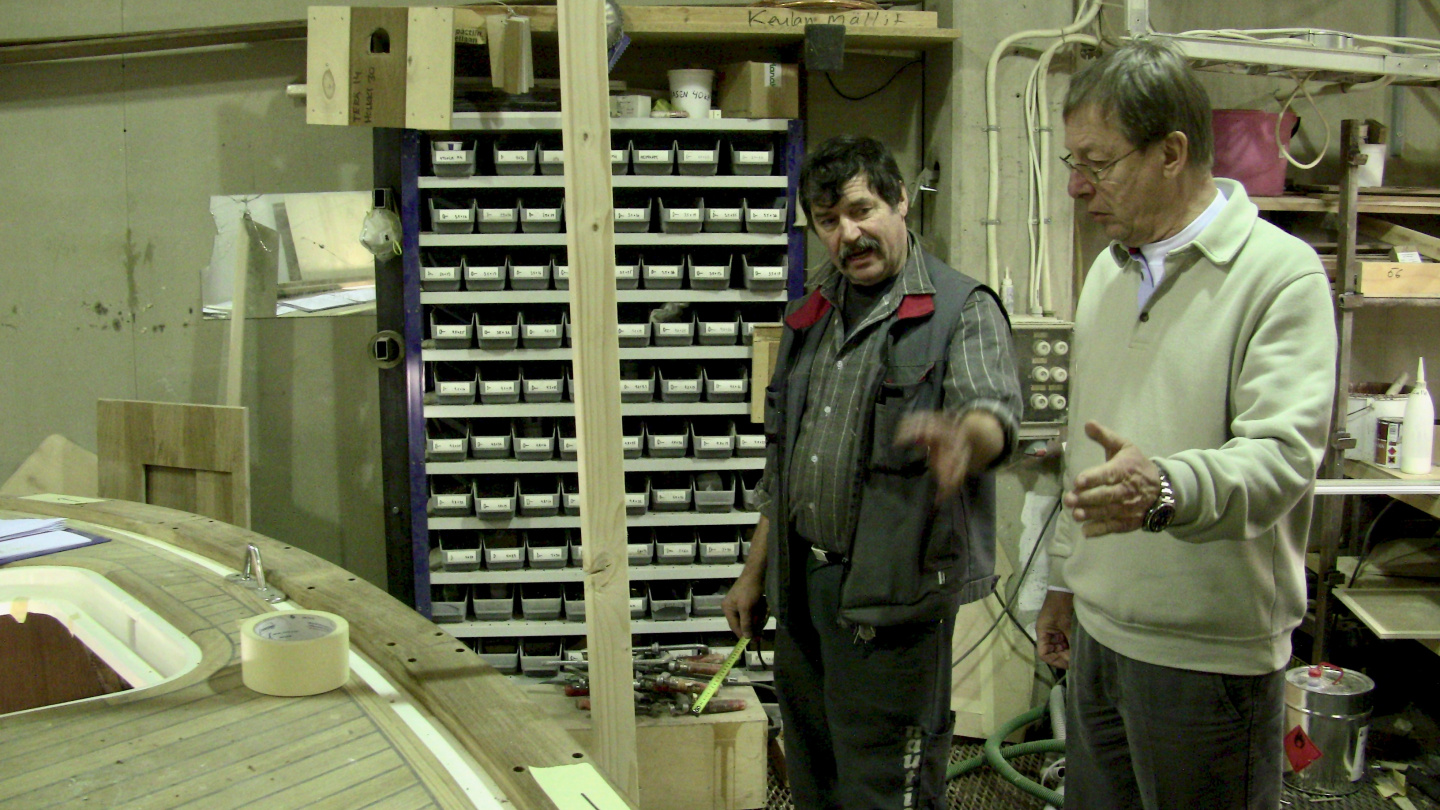
The dinghy will be stored on the swimming platform standing vertically during the shorter legs. During the open sea voyages the dinghy will be emptied and stored on a foredeck. Traditionally 441’s ladder from swimming platform to the aft deck is in the middle of the boat. We moved the ladder to starboard side, so the dinghy can be in the middle of the swimming platform. Now there are plenty of space to handle the mooring stern-to.
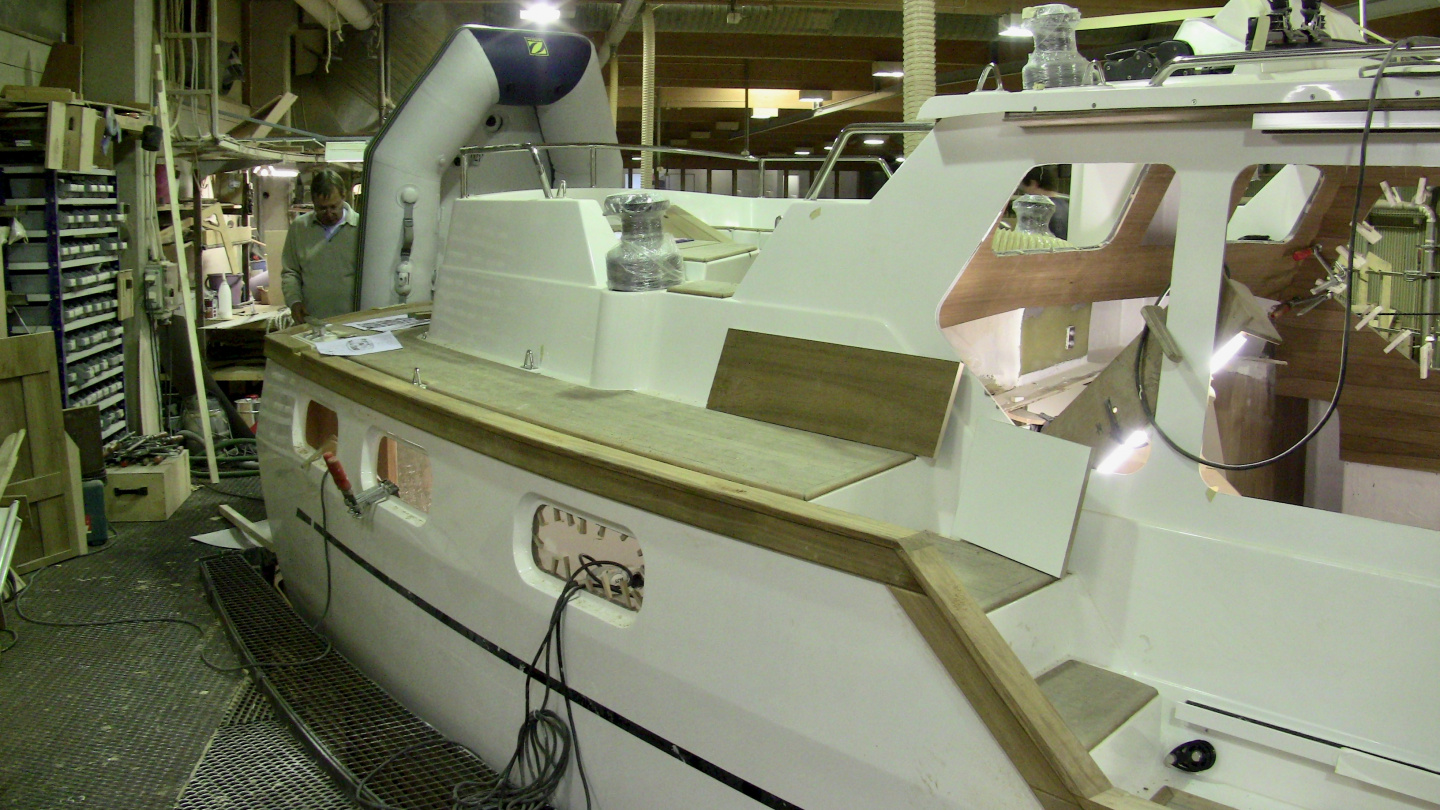
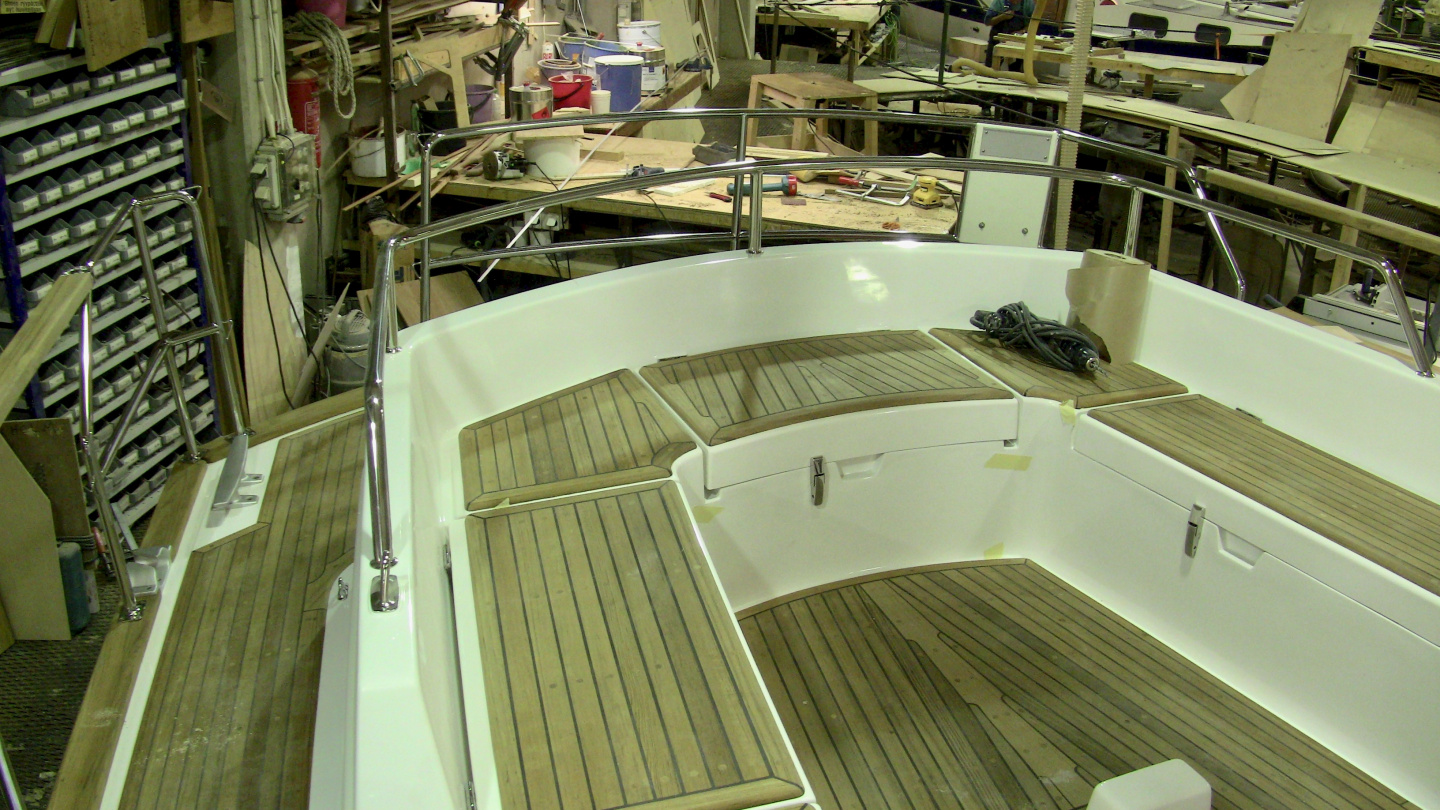
Another detail we like very much in Nauticat is the railing. When we visited in the Nauticat yard next time our Suwena had got a nice steel railing with teak cover. Nauticat 441 has side doors on the both sides of the salon. We also chose an optional gate into the port side of the railing to make bunkering and mooring easier.
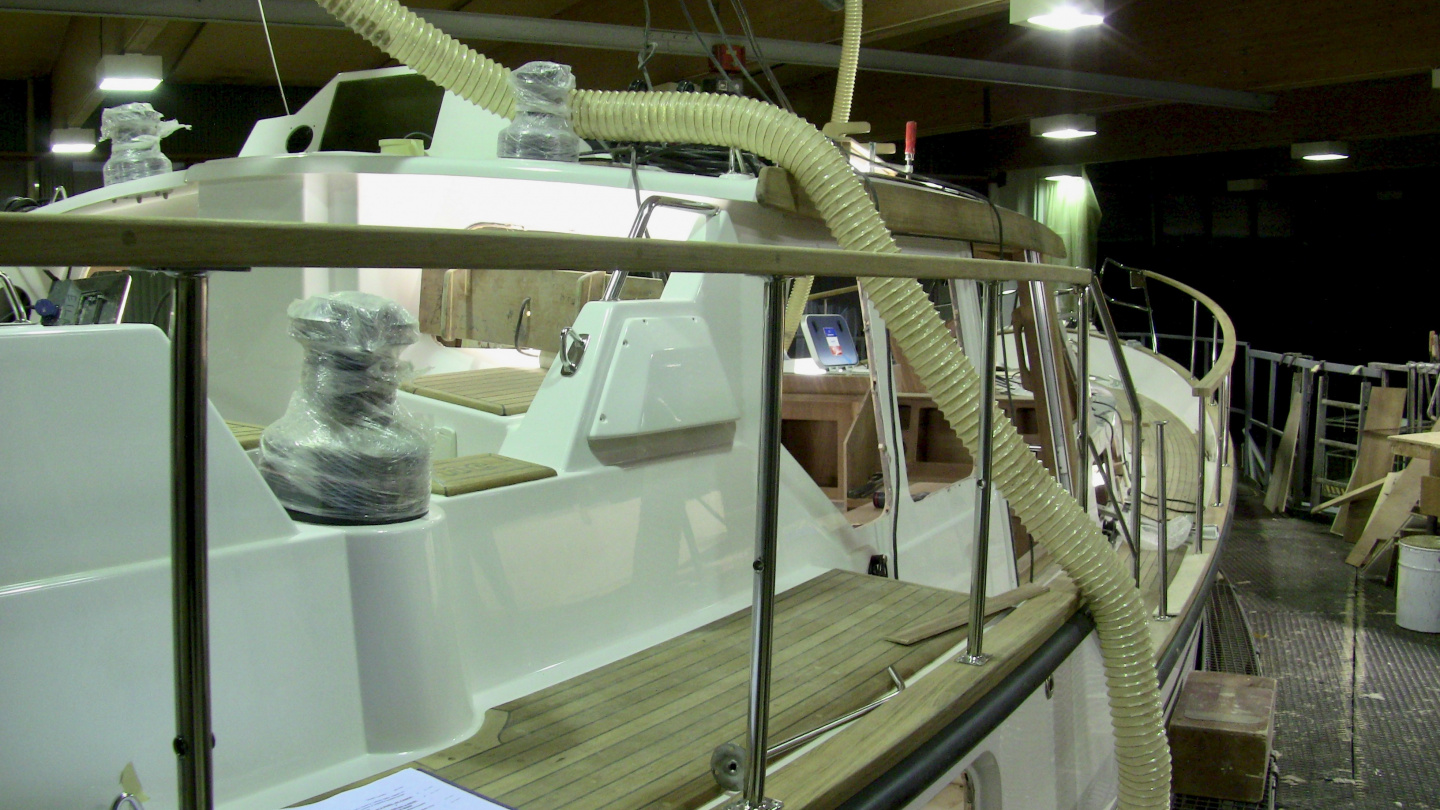
Choosing the ground tackle was a big decision. Nauticat 441 comes default with 35 kg CQR anchor. CQR has been decades the most popular anchor among boaters. However we decided to choose a Rocna anchor, because its ability to reset itself. During the few last years Rocna has become up as another popular choice for cruising yachts because of its good holding power and resetting ability. In a situation where the anchor breaks loose either because of the wind or the current Rocna’s quick resetting makes it a good choice and crew aboard will get a better sleep. Andrus commented here that the anchor is sized about the right when everybody in marina laughs at you. Our Suwena will have a huge 33 kg Rocna anchor. If you are interested more in anchors we recommend to read the story behind Rocna anchors and their knowledge base about anchoring.
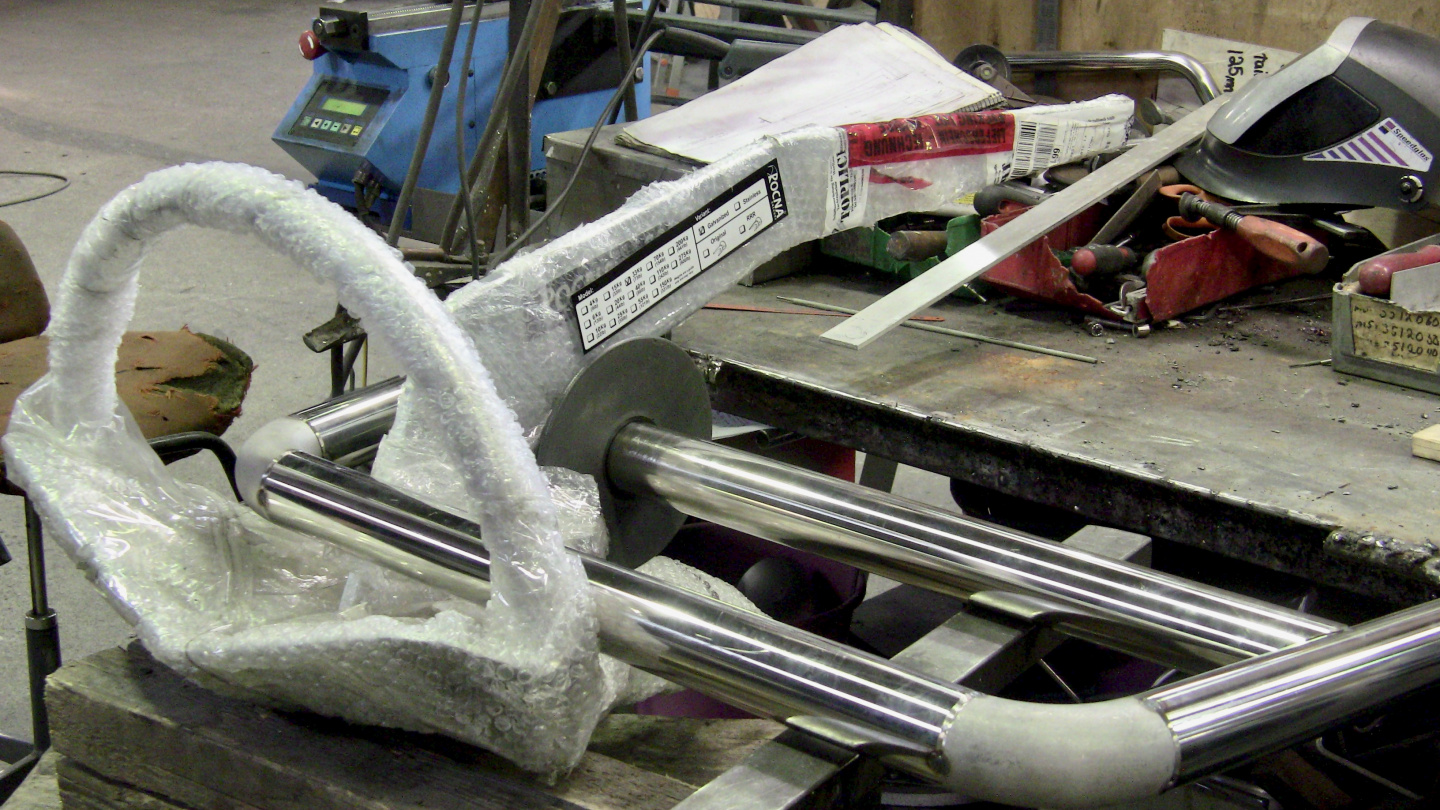
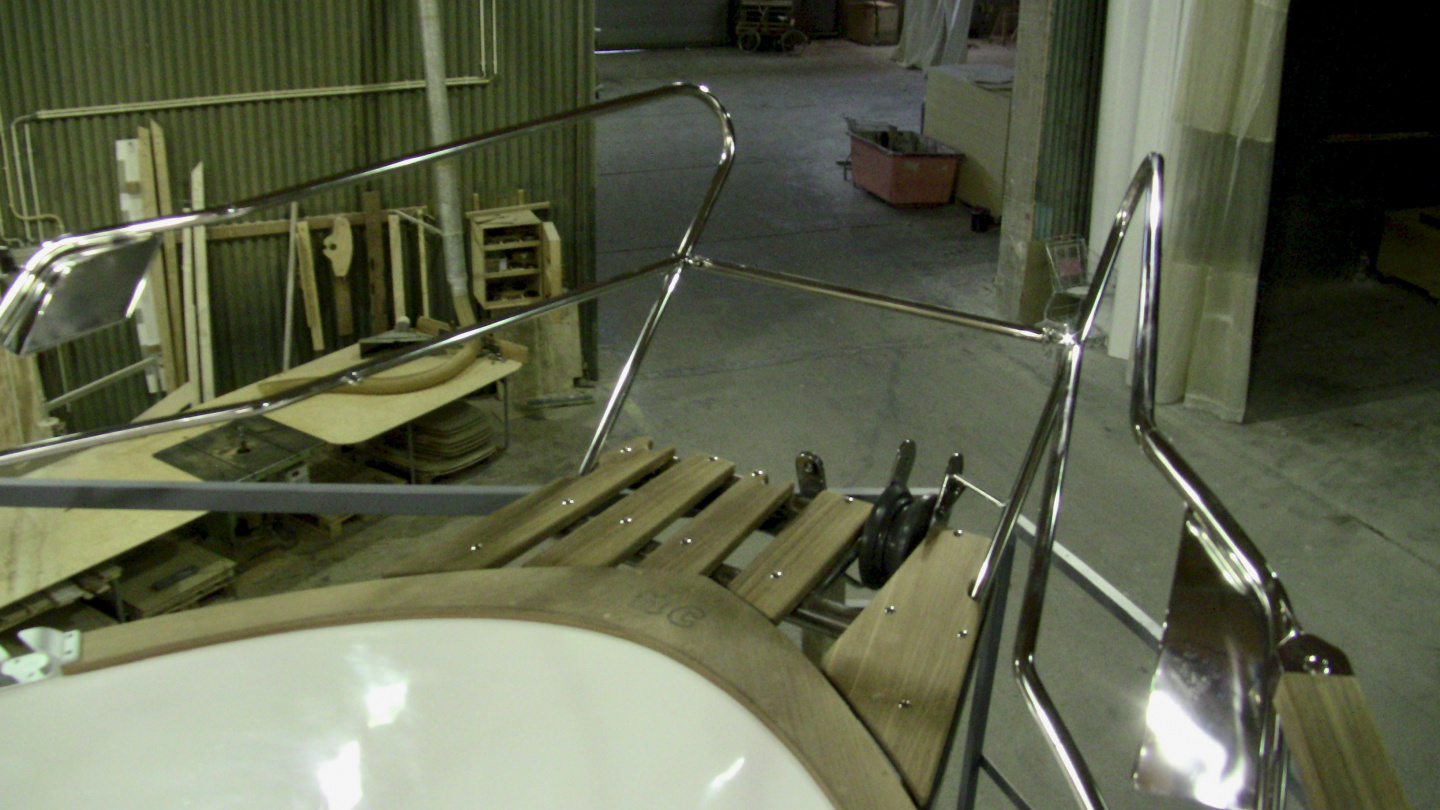
Nauticat’s standard bowsprit is designed for Delta and CRQ -type anchors. The place for the anchor is below the bowsprit. Rocna anchor features the rollbar and needs a different bowsprit for its storage. The yard proposed a solution where bowsprit would be a little shorter and the anchor would be stored on the top of it. The anchor will be lowered and raised by rolling the chain over the front of the bowsprit.
Shortening the bowsprit decreases the area of the headsail. 441’s number 1 genoa area is 53.5 square meters and our headsail area will be 48.5 sq m. This means that our jenny will be between number 1 and number 2 genoa. The final performance of sails will be seen and we will write more after Suwena is sailing on the sea.

